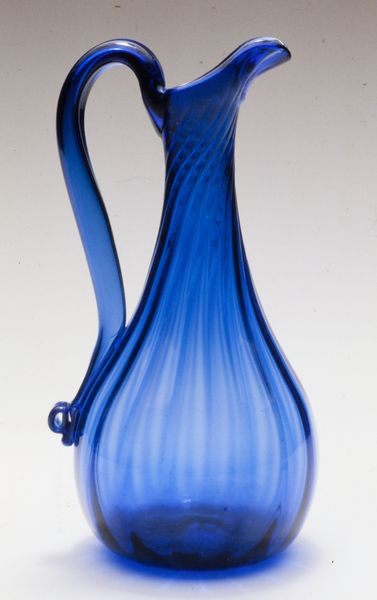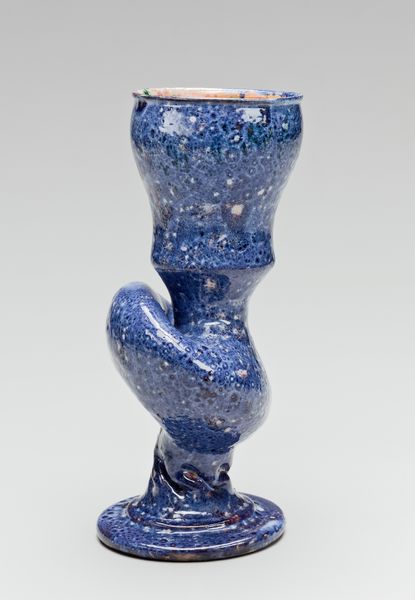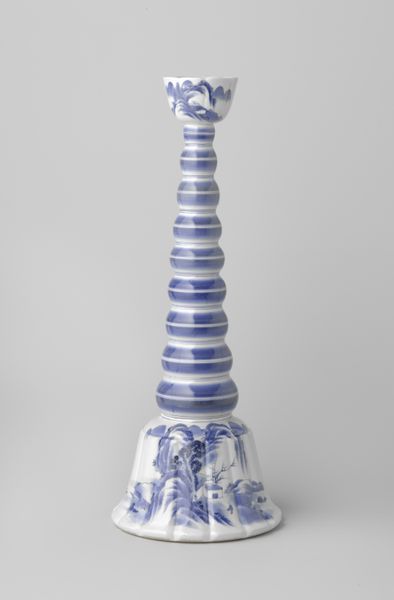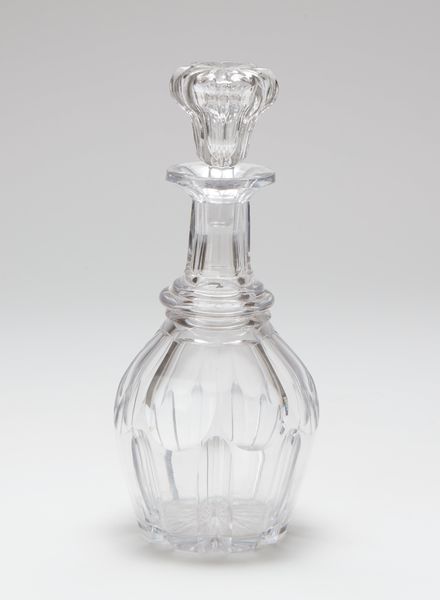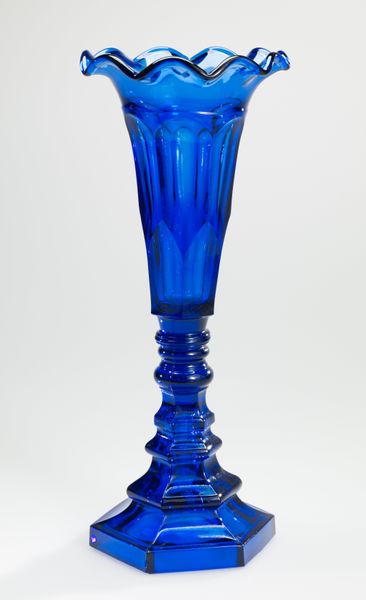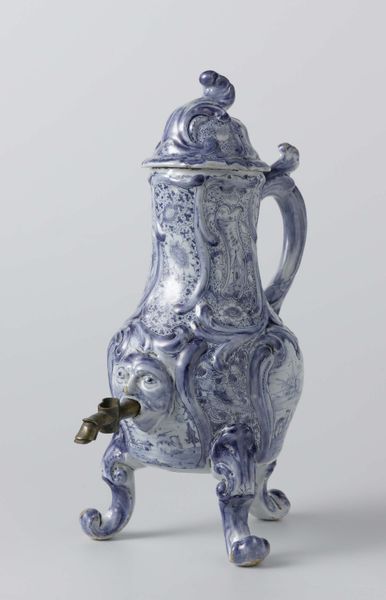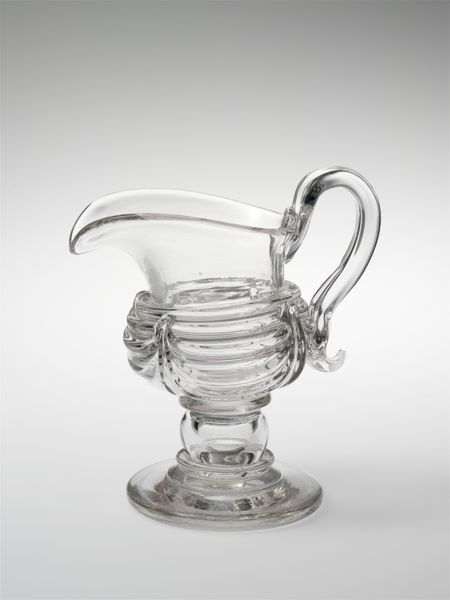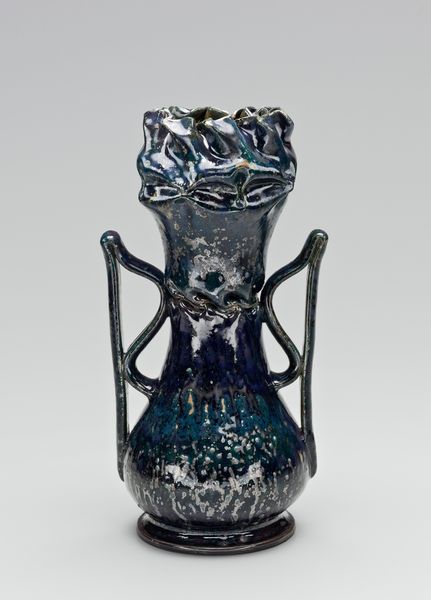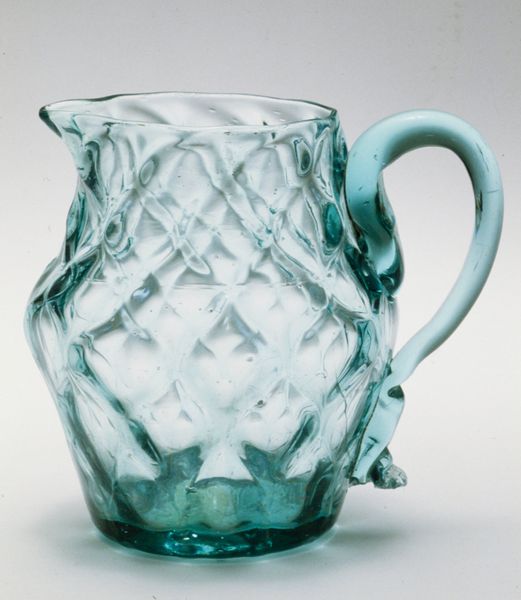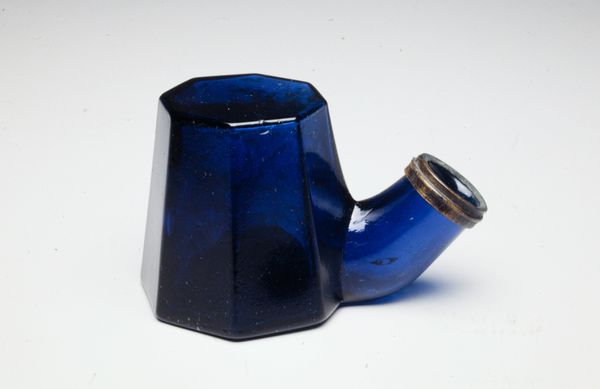
ceramic
#
ceramic
#
ceramic
#
decorative-art
Dimensions: H. 8 1/4 in. (21 cm)
Copyright: Public Domain
Editor: This is a charming little ceramic pitcher created sometime between 1883 and 1887 by Hobbs, Brockunier and Company, residing here at the Met. It reminds me of a dark summer night sky, with its deep blue and sprinkling of light speckles. What can you tell me about it? Curator: Well, it's fascinating how seemingly simple domestic objects like this pitcher can offer insights into broader socio-economic trends of their time. Considering the American decorative arts scene of the late 19th century, this piece speaks volumes about industrialization and access. Editor: In what ways? Curator: This wasn't a unique, hand-crafted piece for an elite patron. Hobbs, Brockunier and Company mass-produced glassware. Items like this blue splatter pitcher became affordable luxuries for a burgeoning middle class. It's about democratization, isn’t it? The advent of mechanized production processes allowing average citizens access to beautiful things. Editor: It’s not exactly high art then, is it? Curator: That’s the point. We need to expand our definition of "art" beyond painting and sculpture to see value in these utilitarian objects, for the artistry *and* for their importance to understanding culture. Plus, mass production spurred creativity in terms of technique. Consider how the “splatter” effect impacted decorative arts as the 19th century neared its close. Editor: I never considered ceramicware with artistic value. I’m curious now how production democratizes consumer culture, too. Curator: Absolutely. Viewing art within a broader framework reveals cultural and industrial revolutions embedded in what might seem, on the surface, like simple decoration.
Comments
No comments
Be the first to comment and join the conversation on the ultimate creative platform.
